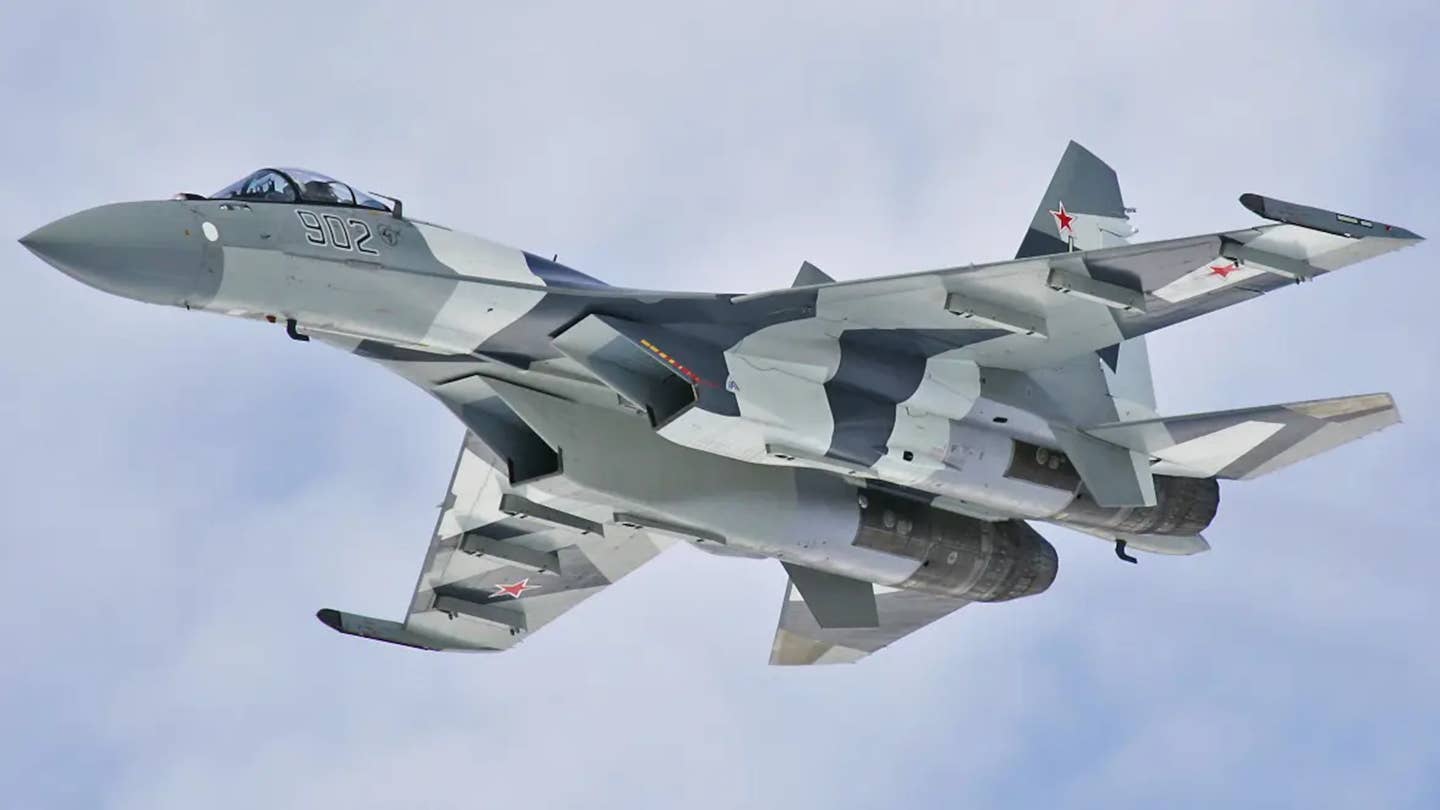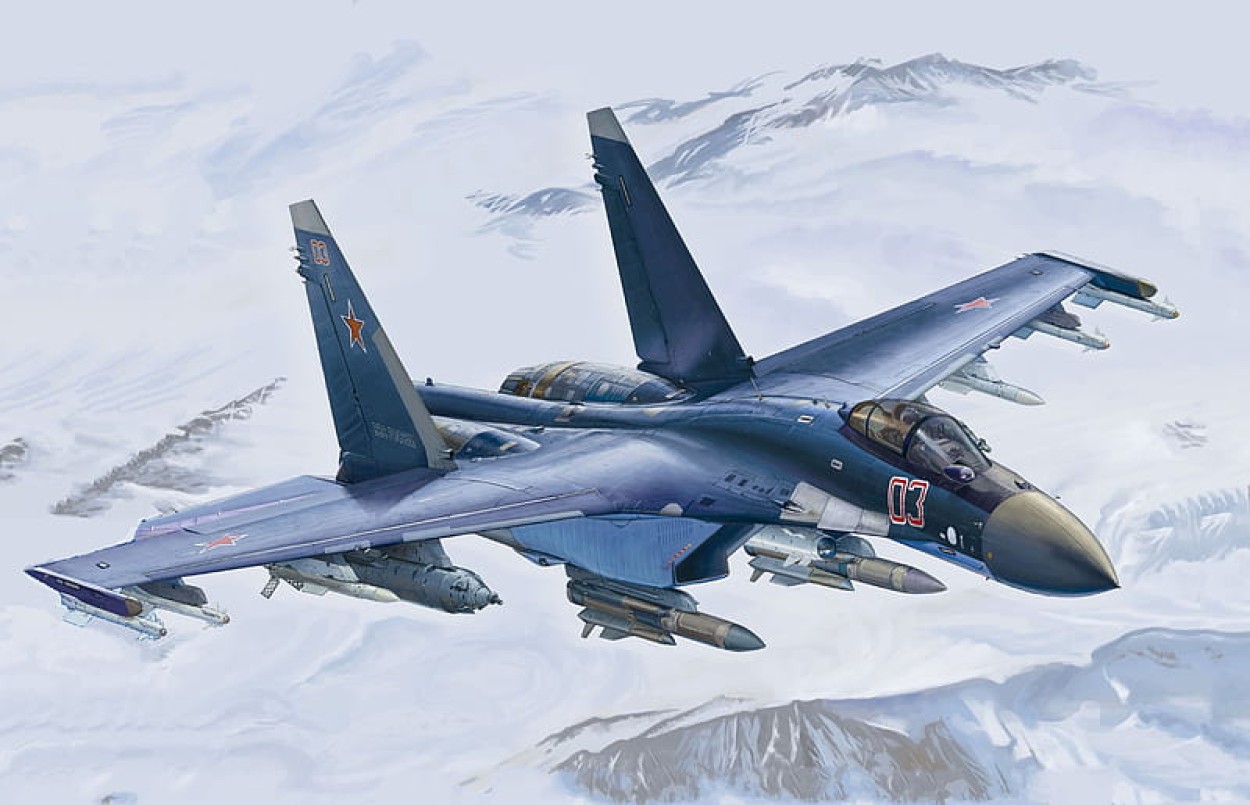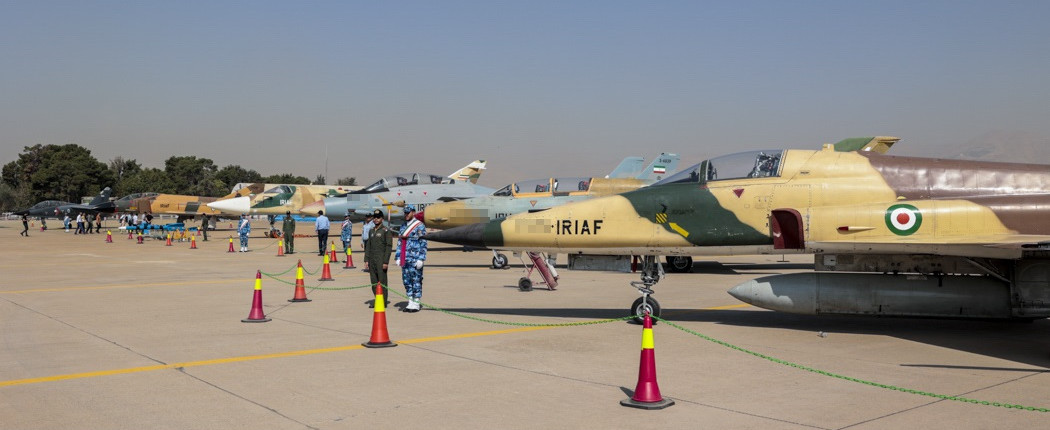Iran is reportedly expected to receive the first shipment of Su-35 Flanker-E fighter jets it purchased from Russia in the upcoming weeks.
Iran’s official Islamic Republic News Agency (IRNA) and several other Iranian media outlets reported that the highly anticipated Su-35 Flanker-E fighter jets, also known as “Super Flankers,” were soon to be delivered to Iran.
However, IRNA later removed the article that made this claim, casting doubts on the reliability of the news. The timeline for the delivery of the Su-35 Flanker-E fighter jets to Iran has been ambiguous and subject to frequent changes, with reports indicating varying delivery schedules.
The initial reports suggested that the Su-35 Flanker-E fighter jets would be delivered by March, but the timeline was later pushed to April.
Nonetheless, the much-anticipated arrival of the Super Flankers is expected to represent a significant milestone for the Islamic Republic of Iran Air Force (IRIAF).

The arrival of these advanced fighter jets holds the promise of transformation and could potentially boost Iran’s military aviation capabilities to a new level.
In March, Iran’s permanent mission at the United Nations officially confirmed the country’s successful completion of a deal to acquire the aircraft. Iranian media reported that Iran was set to receive 24 units of the plane as part of the agreement.
Iran has not made any significant acquisitions of new fighter aircraft in recent years, apart from a small number of Russian MiG-29 Fulcrum fighters purchased in the 1990s.
The Islamic Republic of Iran Air Force (IRIAF) primarily relies on different versions of older aircraft models, such as the F-4 Phantom II, F-14 Tomcat, and F-5E/F Tiger II.
In addition to the fighter jet acquisition, Tehran is anticipated to receive various other military assets from Russia in the coming months. These include air defense systems, missile systems, and helicopters, further bolstering Iran’s defense capabilities.
Su-35’s Performance In Ukraine
As Iran prepares to receive its Su-35 fighter jets from Russia, the aircraft is already making waves for its impressive performance in the ongoing Ukraine conflict.
The Ukrainian Air Force faces a significant threat from the Su-35 fighter jet, with pilots publicly admitting their inability to counter this advanced warplane effectively.
The Su-35’s performance underscored its impressive capabilities as a formidable air-to-air combat fighter. The Russian warplane is a highly versatile single-seat fighter that engages the enemy’s air, ground, and naval targets.
Its key functions include conducting aerial patrols, neutralizing ground infrastructure targets, and operating in areas protected by air defense systems, even at considerable distances from its home airfield.
Notably, the Su-35 boasts exceptional super maneuverability capabilities, allowing it to execute complex aerial maneuvers and maintain an edge in air-to-air combat.

A recent report by The EurAsian Times highlighted that Ukrainian fighter jets had been compelled to employ evasive tactics, including flying at very low altitudes, to dodge air-to-air missiles launched by the Russian Aerospace Forces’ Su-35 fighter jets.
In a critical situation, when targeted by air-to-air missiles, Ukranian fighter pilots know that their primary objective is ensuring their survival rather than completing their mission.
Ukrainian pilots consider the Russian Su-35 their “biggest enemy.” While they can predict the positions and ranges of air defense systems, the mobile nature and advanced air surveillance capabilities of the Su-35 pose challenges for Ukrainian pilots flying toward the front lines.
In a recently released video, Ukrainian air defense troops expressed their preference to engage and neutralize the Russian Su-35 fighter jet using the newly acquired Patriot missile system.
How Su-35 Will Propel Iranian Air Force
The deployment of Su-35 fighter jets would mark a significant advancement for Iran’s Air Forces, representing the introduction of the most modern combat aircraft in their arsenal.
In a historic deal in 1976, Iran initiated the delivery of the first batch of 80 F-14A Tomcats it had ordered from the United States. However, due to the profound shift in relations between Washington and Tehran following the 1979 Islamic Revolution, Iran managed to acquire 79 aircraft.
Even with a US arms embargo and unreliable TF30 engines, the F-14As inherited by the IRIAF fought in Iran’s eight-year war with Iraq and managed to down many enemy jets. The pilots who flew them had previously been imprisoned and tortured by the new Islamist regime.
The Tomcat, equipped with the advanced AWG-9 radar and armed with the long-range AIM-54 Phoenix air-to-air missile, was an exceptionally potent adversary and an undisputed air superiority fighter.

Its robust capabilities allowed it to engage targets from up to 100 miles. Despite its status as a cutting-edge fourth-generation fighter during its heyday, the F-14 Tomcat gradually succumbed to the effects of time.
On the other hand, Iran’s adversaries have successfully acquired more sophisticated and modern aircraft, leaving Iran with a massive disadvantage regarding its air power capabilities.
Besides Tomcat, Iranian Air Force also operates Mirage F1BQ, F-4 Phantom II, and F-5E/F Tiger II.
However, Iran has been grappling with operational challenges when it comes to its aging fleet of warplanes. The difficulties in maintaining and operating these older aircraft have posed significant hurdles for the country.
Therefore, introducing the Su-35 will significantly advance Iran’s air force in terms of technology. The Su-35’s advanced capabilities are expected present a big worry for its regional adversaries.
The presence of the Su-35 poses a challenge to any potential Israeli preemptive action against Iran, especially considering the Israel Defense Forces (IDF) possession of fifth-generation F-35 stealth fighters and their overall air superiority in the region.
- Contact the author at ashishmichel(at)gmail.com
- Follow EurAsian Times on Google News




